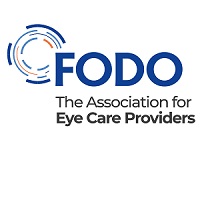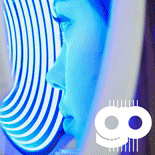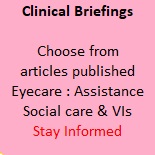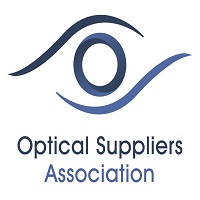General News
AIO sends a letter to Grant Shapps to promote road safety awareness and vision.
AIO sends letter to Grant Shapps
It reads: Dear Minister,
The Road Safety Statement 2019 A lifetime of road safety
We understand that the Department for Transport is reviewing road safety including a review of vision driving standards 2.67 and 2.68 page 31-32 and therefore thought it worthwhile writing to you to inform you about vision standards that the Association of Independent Optometrists (AIO) have been reviewing and including a mandatory “Vision MOT” proposal.
As an AIO council member I was invited to attend a meeting on 13th November at Portcullis House chaired by Jack Dromey who became interested in this issue as I believe one of his constituent’s grandchildren was tragically fatally injured by a motorist who had been told his vision was below standard but nevertheless continued to drive.
As a keen motorist aged 72 it is clear that older drivers should have vision checks more often as conditions affecting vision such as glaucoma, cataract and age-related macular degeneration become more prevalent. However, this might seem somewhat “age discriminatory” as vision loss can occur at all ages. It is rather bizarre that whilst vehicles are required to have annual road worthiness checks, other than a vision check at the time the driving test is taken there is subsequently no further vision roadworthiness check until the age of 70, and even then at this point it is simply a self-reporting procedure.
• The current test standard requiring simply reading a number plate at 20 metres was set in 1937 so no longer fit for purpose as driving conditions have changed somewhat since that time.
• A BRAKE survey suggests that 1.5 million drivers have never had their eyes tested.
• Cyprus, France, the Netherlands, Norway, and the UK are the only European countries with number plate self-test.
• A Vision Express poll found 75% of drivers want a recent eye test to be mandatory when renewing a driving licence.
Evidence
The main objection to changing driving vision requirements has historically been that there is no evidence linking poor eyesight with accidents. This is simply non-sensical as it clearly self-evident that good vision, including good peripheral vision, is essential in order to safely navigate whether driving, cycling or walking.
The reason there is “no evidence” is simply because there is virtually no possibility of gathering such evidence in the vast majority of accidents; if it is impossible to gather such evidence it is a rather circuitous argument to conclude nothing needs to be done.
We have proposed there are therefore two crucial vision tests in order to drive safely.
1) 20 metre number plate test.
The present requirement to read a number plate at 20 metres is however insufficient. This test provides a useful measure of central vision or acuity, but it precludes any check on peripheral vision.
2) Peripheral vision
Peripheral vision is fundamental to navigating and avoiding collisions. This is particularly true for “small targets” which includes cyclists, motor cyclists and pedestrians.
To quote from a paper published in the British Journal of Ophthalmology “ Crucially, while we do not use the peripheral visual field for exploratory vision, its sharp temporal sensitivity is key to navigating in response to sudden events” (1) Effectively what this is saying is that when we are navigating through any space – whether driving, cycling or walking – we avoid collisions by reacting to events away from our central vision (or “out of the corner of our eye”). This means that the simple central acuity measurement provided by the number plate test is largely irrelevant for reacting to cyclists, pedestrians or any object appearing in our peripheral vision.
A useful representation of how visual field loss can affect vision was sent with this note is shown below and perfectly illustrates why “self-reporting” will not work.
These images were taken from a paper “How does glaucoma look?” (2) by David Crabb et al at the Department of Optometry and Visual Science, City University London.
The authors wanted to understand exactly what people “see” with visual field loss which occurs not only in glaucoma but also in other types of ocular pathology. As you will see from the images, rather than obvious “blind patches”, in the majority of cases of peripheral vision loss the brain “fills in” the blind spot(s), resulting in no awareness of anything being there – so subjects are completely unaware that bits of their vision are missing.
As a result, a driver could genuinely believe they see well, whereas in reality they may not be able to perceive pedestrians, cyclists or other vehicles approaching.

Unmodified image; as seen by a subject with “normal” peripheral vision

Modified image; as seen by a patient with typical peripheral vision loss. No obvious blind spots reported by the subject, but critical details missing from the picture.
The AIO would therefore like to present the following proposal:
All drivers must undergo a mandatory assessment of visual function at the time of driving licence renewal. This would be at no cost to the taxpayer and be funded by the driver *
Visual standards:
1. Visual acuity – a minimum of 6/9 binocular vision
This can be easily measured and a minimum standard of 6/9 binocular vision, which is the requirement for HGV drivers, would seem to be an eminently sensible requirement.
2. Binocular Visual field test
Whether motoring, cycling or walking we largely avoid collisions by peripheral awareness and a simple visual fields tests can quickly and easily assess this function. Moorfields state the minimum visual field for safe driving is a field of vision of at least 120 degrees on the horizontal meridian. The binocular Esterman test as currently required for drivers over 70 with any ocular pathology would meet this requirement.
* The DVLA vision assessment fee could be left to the optometrist and could be a commercial decision to be made by each individual practitioner.
Yours sincerely, Michael Killpartrick
(1) https://www.researchgate.net/publication/272296255_
(2) Ophthalmology. 2013 Jun;120(6):1120-6. doi: 10.1016/j.ophtha.2012.11.043. Epub 2013 Feb12























